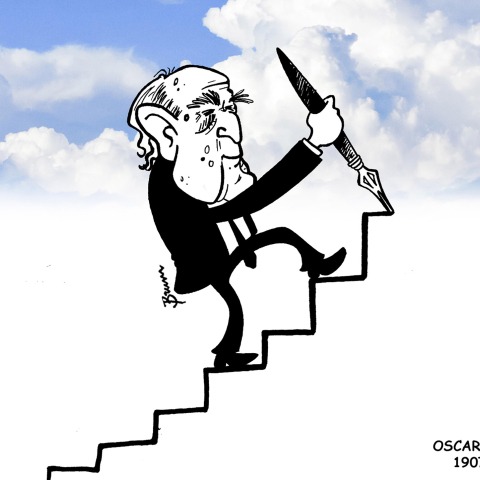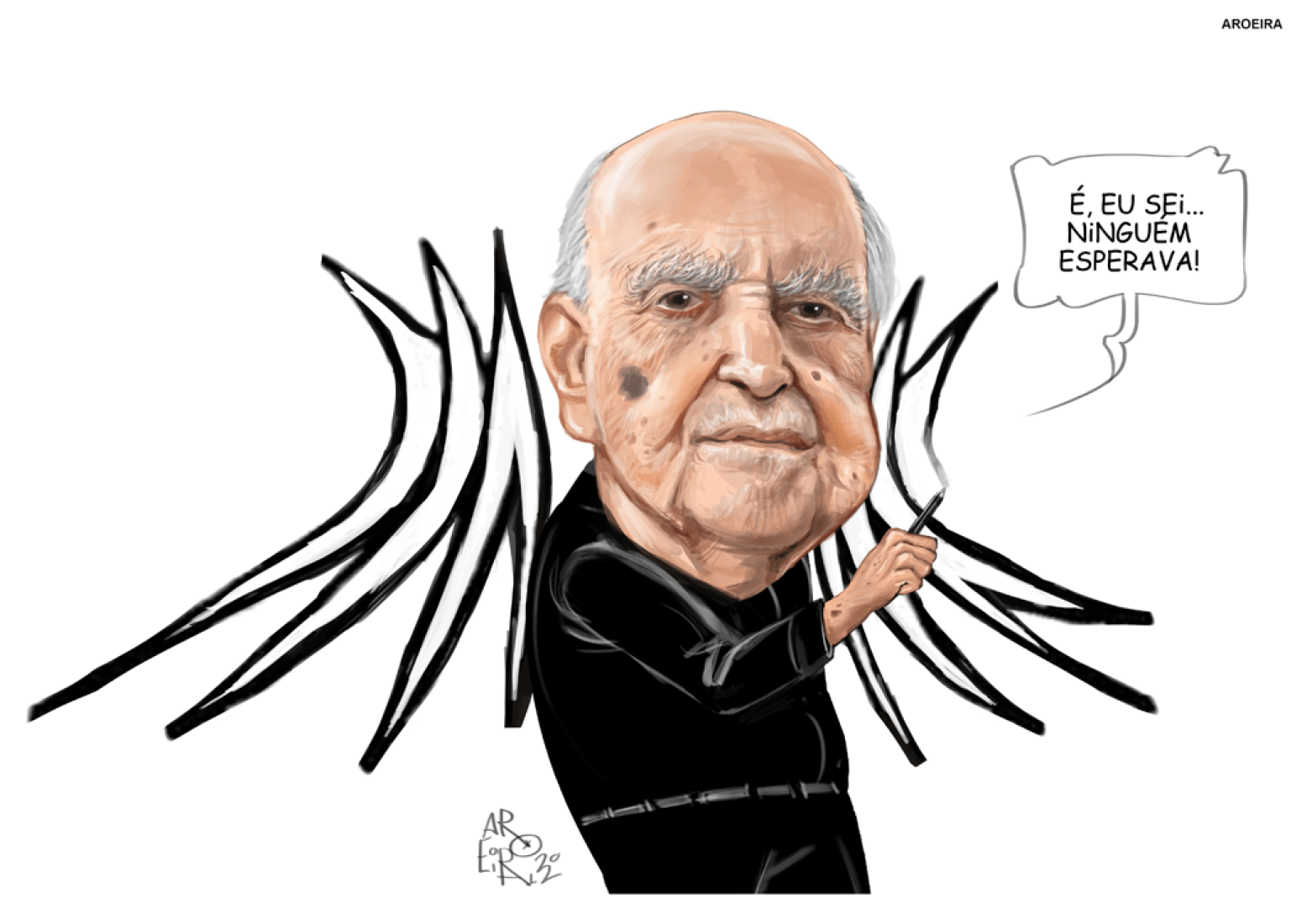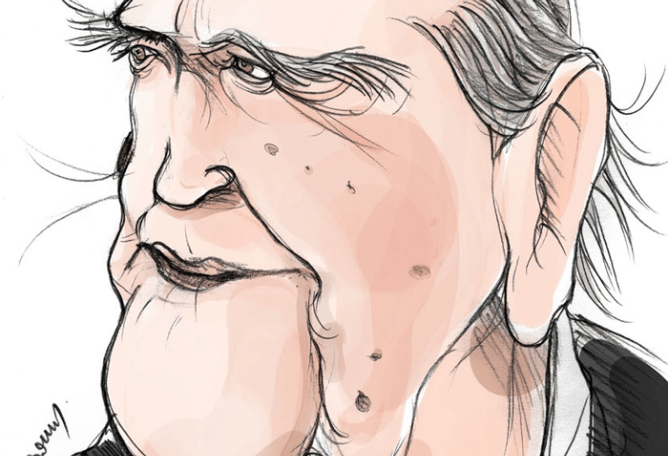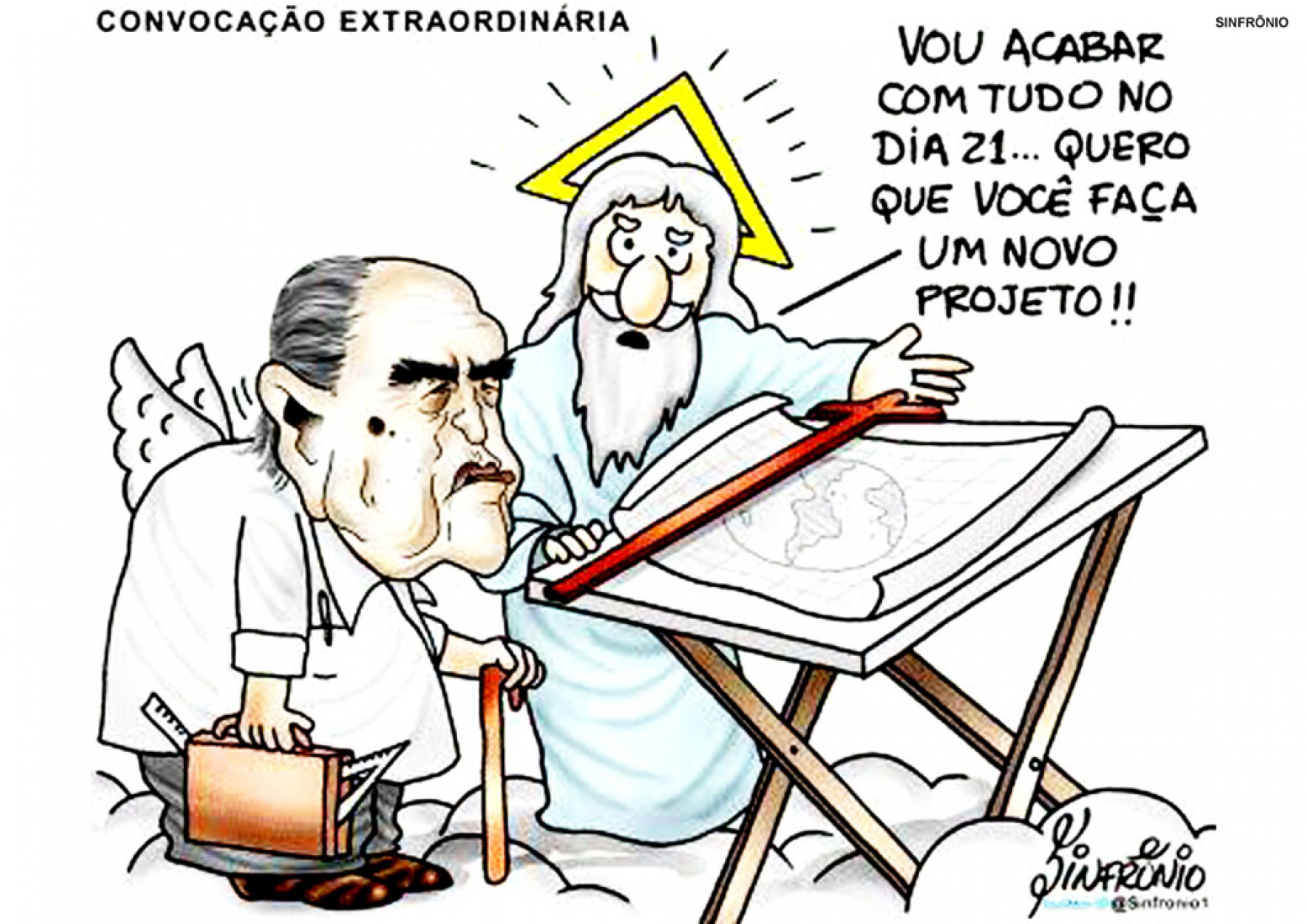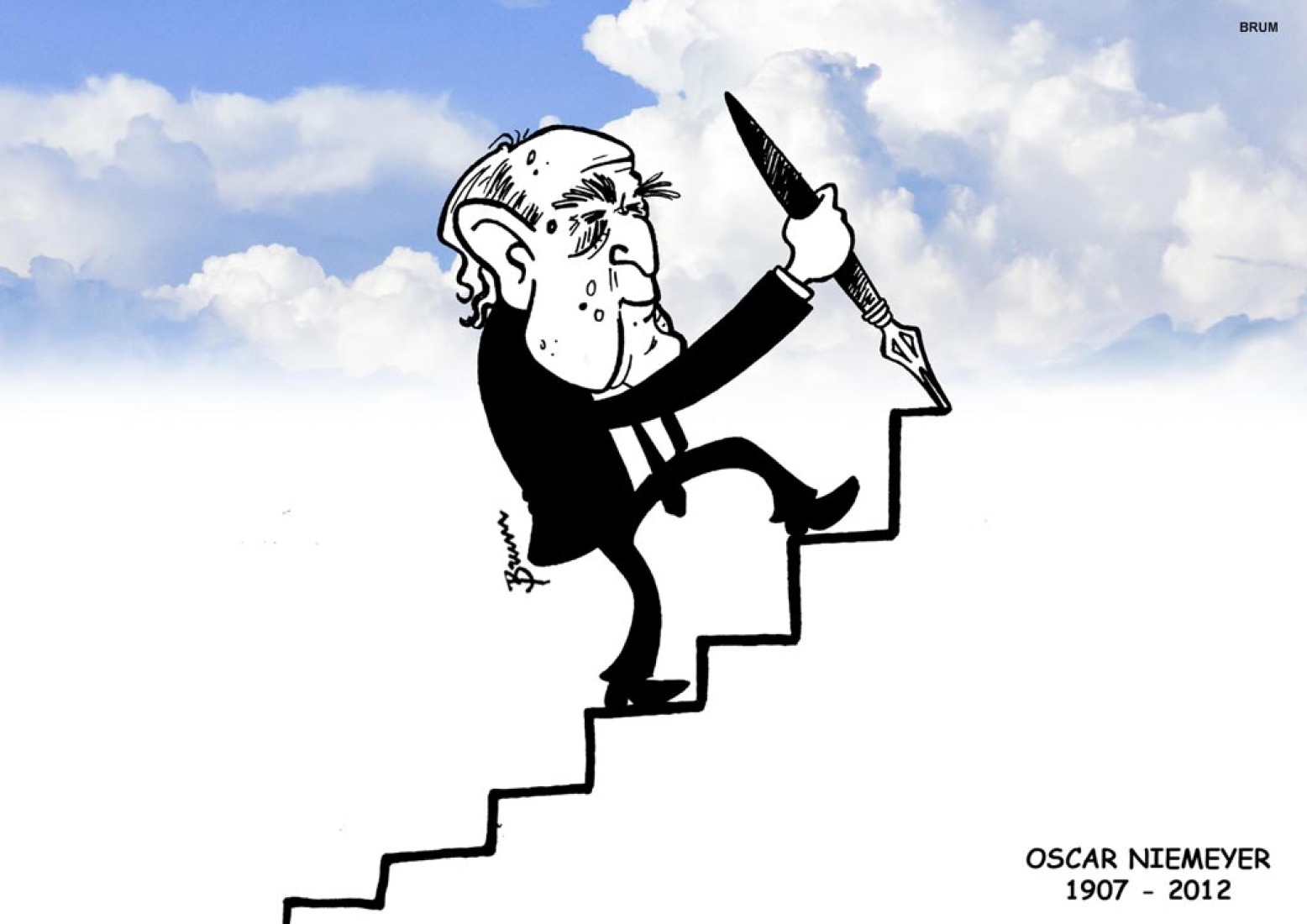Memorial Foundation will make it a book this year. We look forward to editing.
Dates.- until 31 January 2013.
Venue.- Biblioteca Latino Americana Victor Civita, Avenida Auro Soares de Moura Andrade, 664 / 01156-001, distrito de Barra Funda, en la Zona Central de la ciudad de Sao Paulo, Brazil.
Participants in the exhibition "Oscar Niemeyer Nosso" are the following artists: Alan Souto Maior, Ale Santos, Alecrim, Alessandra Nogueira, Alpino, Amarildo Amorim, André Brown, Aroeira, Baptistão, Benjamim Cafalli, Bira Dantas, Biratan, Brum, Bruno Hamzagic, Claudio, Dálcio, Danilo Marques, De Pieri, Ed Carlos, Eder Santos, Edgar Vasques, Elihu, Evandro Rocha, Fabiano Carriero, Fernandes, Floreal, Fred, Fredson Silva, Gau Ferreira, Gepp, Glen Batoca, Gustavo Paiva, Erico, Hippert, Izidro, JAL, J.Bosco, Jean, Jorge Barreto, Jorge Trilho Inácio, Josú Barroso, Junior Lopes, Kaltoé, Lézio Jr, Liliana Ostrovsky, Lovato, Luciano Félix, Luiz Pinto, Manga, Marco Souza, Marconi, Mariano, Maringoni, Mauricio de Sousa, Mikio, Mônica Fuchshuber, Nei Lima, Nelson Santos, Olávo Tenório, Orlando, Ozon, Paffaro, Paulo Cavalcante, Rafael Camargo, Ray Costa, Santiago, Seri, Stegun, tako X, Trilho, Ulisses, Veloso, Veronezi, Waldez , William Medeiros, Bruno Honda, Cristina Carnelos, Dimaz Restivo, Evandro Alves, Flávio Teixeira, Izânio, Moacir Torres, Natália Forcat, Paulo Jr., Quinho, Thiago Bertoni, Toni D’agostinho, Ferreth, Iéio, Julinho Sertão, Manohead, Tonho, Rico, Danilo Escarpa, Dilmar Jr. e Jota.
